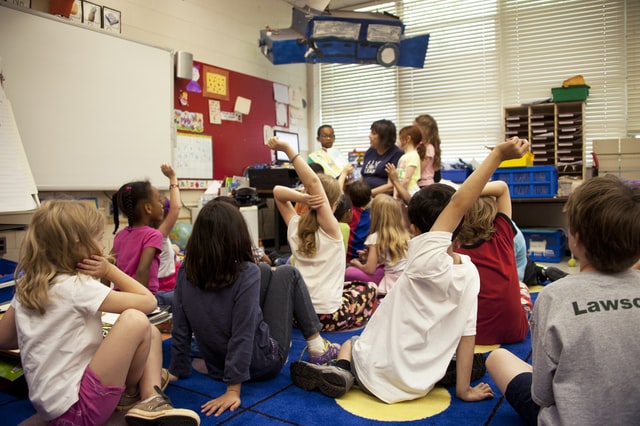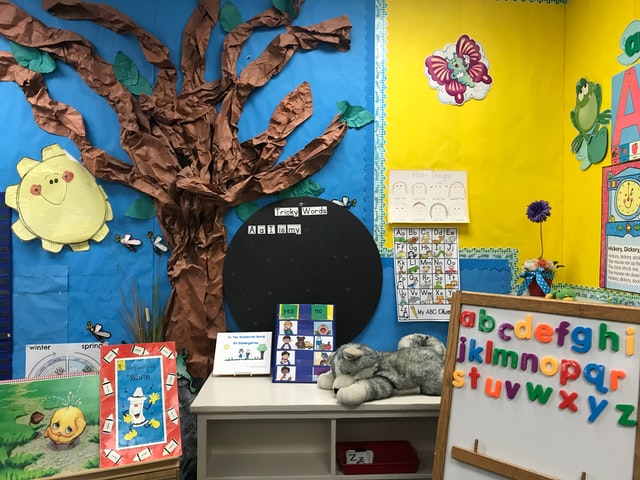The Top Four Things to Look for When Visiting a School (and What’s Not as Important as You Might Think!)

School tours are an essential component of the school search process, regardless of what grade your child is entering. There is no substitute for physically being present on campus and seeing the students and teachers in action. Even if a virtual tour is your only option, though, there is still a lot you can learn.
There is much to take in when touring a campus, and it can be hard to know what to focus on. If you’re touring multiple schools, they all might start to look the same, or you might start to feel overwhelmed by how drastically different they are.
To keep you engaged on tours, here are the top 4 things to pay attention to when visiting a school:
1. Voices
When you enter a classroom, pay attention to who is doing the talking. Is it only the teacher’s voice you hear, or are student voices present as well? Is the teacher a sage on the stage, or a guide on the side? Is the teacher providing ample opportunities for students to engage, discuss, share, converse, and make sense of new material and ideas?
In lower elementary classrooms, look for children having frequent structured conversations with partners or small groups in response to books the teacher is reading aloud, math problems, or scientific hypotheses.
In upper elementary classrooms, look for students engaging in more complex lines of inquiry, building upon each other’s comments, making counterpoints and well-reasoned arguments, expressing opinions, and making connections.
In middle school classrooms, keep an eye out for students initiating and leading discussions, respectfully disagreeing with each other or the teacher, backing up opinions with research and facts, and presenting original work and theories.
2. Walls
Observe what is on the walls of the hallways, classrooms, auditoriums, and offices. Are the walls filled with store-bought posters and motivational phrases, or is student work displayed and celebrated?
In elementary schools, look for indications that the process of learning is valued as much as, or more than, the final product. For example, student writing should show evidence of the writing process, with words crossed out, corrections, sticky notes, and more. Check to see if all students’ work is displayed, not just the best or nicest looking examples.
In middle schools, check for examples of students going deep with their thinking and learning, and see if they are being asked to show how they know, not just to provide answers or solutions. For example, you might see posters showing the steps a student used to solve a particular math problem.
3. Layout

Take note of who the classrooms are designed for. Is the set up, furniture, and lighting age-appropriate and conducive to learning?
In lower elementary classrooms, look for low tables and chairs, a group gathering space such as a carpet, a cozy reading nook or quiet corner, low shelves, and communal supplies that are organized, labelled, and easy to access.
In upper elementary classrooms, expect to see a transition away from communal and shared supplies and spaces, which gives children opportunities to practice their burgeoning independence. Student mailboxes or cubbies, iPads or computers, individual supply storage, and larger furniture are to be expected.
In middle school classrooms, expect most of the space to be occupied with desks or tables, and less space devoted to group gathering. Many schools separate middle school classrooms by subject, so you should see specific equipment or furniture that is relevant to the subject taught in each classroom. For example, a science classroom should have lab equipment and sinks, whereas a humanities classroom would likely have a large collection of books.
4. Walking the Walk
It’s easy for a school to say that they are progressive, inclusive, child-centered, Montessori, or any other number of education buzzwords. What’s more difficult is actually practicing these concepts and pedagogies day in and day out.
Regardless of grade level, look for all the members of a school community to be using common language, consistently upholding the school’s stated values, and engaging with each other in ways that are authentic and aligned with their mission.
For example, if a school identifies as prioritizing social justice, you might look for books on display in the classrooms and library that represent a diverse range of social justice topics.
At a school with a social emotional focus, look for teachers and staff members facilitating conflict resolution between students at recess.
At a “green school,” look for compost and recycling bins, non-toxic supplies and cleaning products, bike racks, and native plants in the landscape.
What’s NOT important (and may actually be a red flag!)
When visiting a school, it’s tempting to be swayed by fancy equipment, vast playgrounds, and delicious catered food.
While these things can certainly enhance one’s overall experience at a school, they should not be the deciding factor in whether or not you choose to apply or enroll your child.
Here are a few things that might seem important or representative of a “good” school, but in fact can actually be indicative of misplaced priorities:
1. Pristine Classrooms With Zero Clutter or Mess
2. Desks in Straight Rows
The traditional image of individual desks in rows facing a large teacher’s desk is no longer considered a best practice in most circumstances.
3. Silent Students Sitting Perfectly Still
Are you a parent in the Bay Area who needs help finding the right school for your child?
Click here to get in touch! You can also instantly book a free 30 minute call with me by clicking here.
